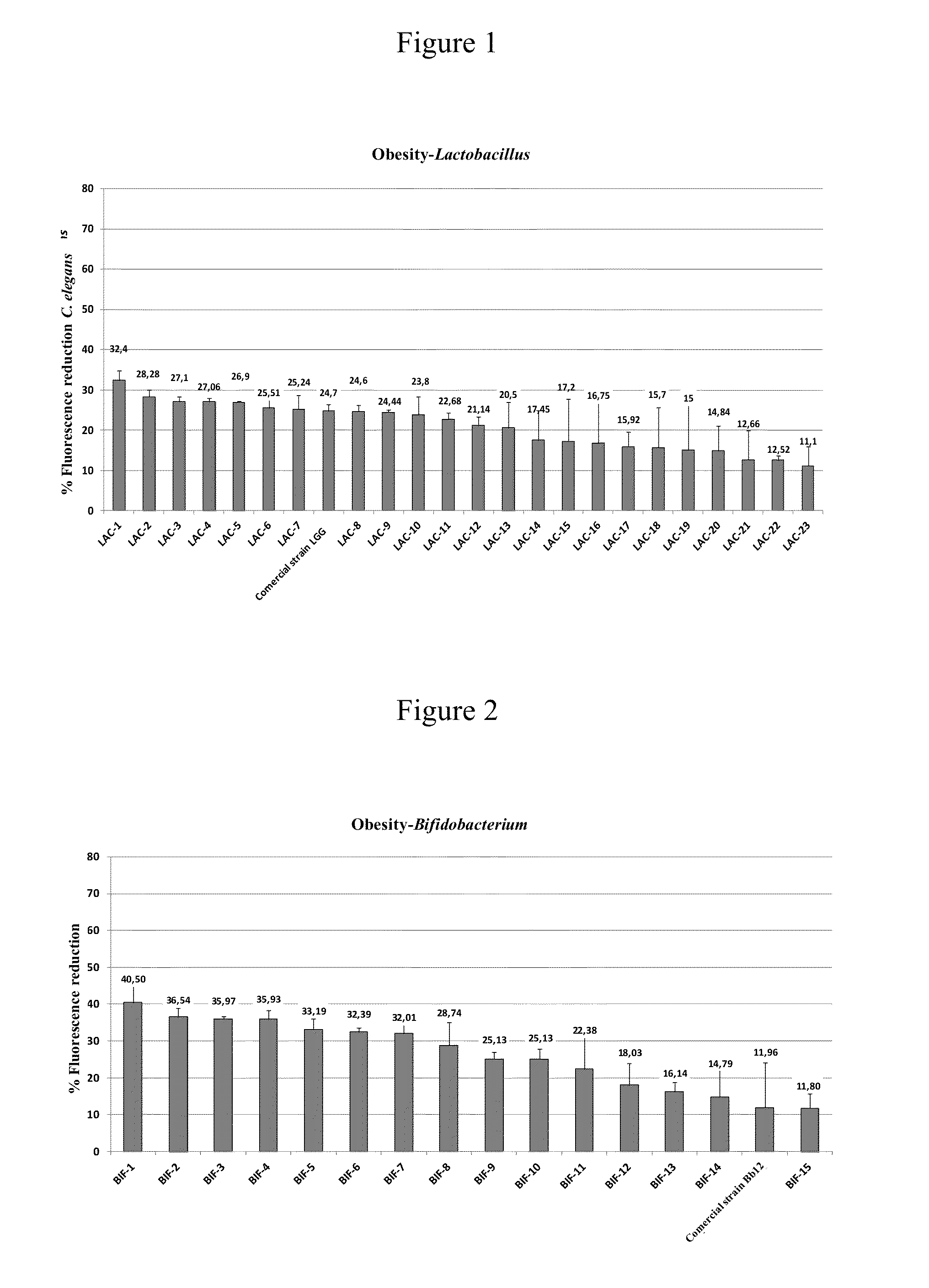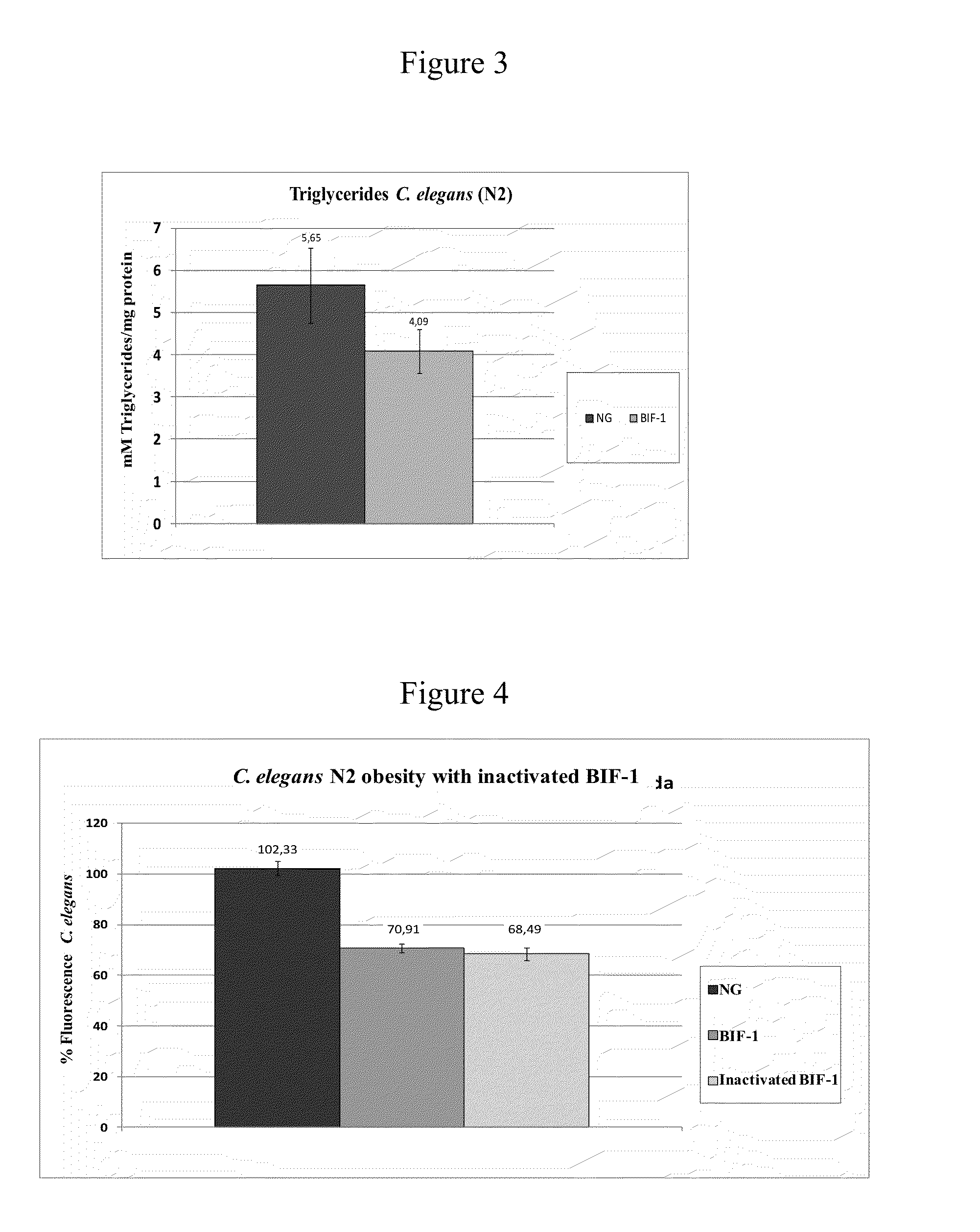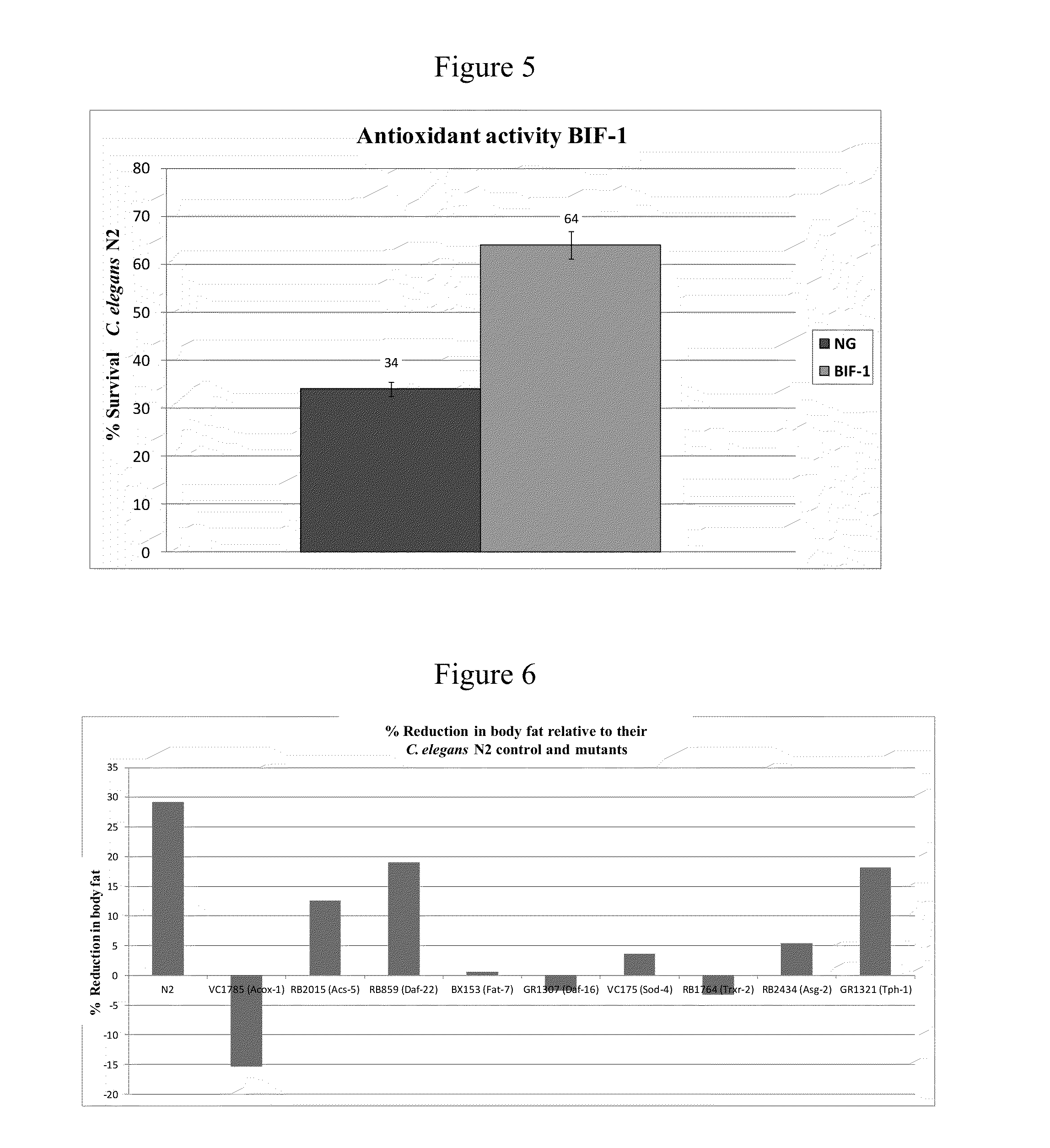Novel strain of bifidobacterium animalis subsp. lactis cect 8145 and use thereof for the treatment and/or prevention of excess weight and obesity and associated diseases
a technology of bifidobacterium animalis and lactis cect, which is applied in the field of new strains of bifidobacterium animalis subsp. lactis cect 8145 and its use in the treatment and/or prevention of excess weight, obesity and associated diseases, to achieve the effects of reducing body fat, reducing body fat, and reducing body fa
- Summary
- Abstract
- Description
- Claims
- Application Information
AI Technical Summary
Benefits of technology
Problems solved by technology
Method used
Image
Examples
example 1
[0084]Screening Bacteria for Body-Fat Reduction in Caenorhabditis elegans.
[0085]Twenty-three strains of the genus Lactobacillus and 15 strains of the genus Bifidobacterium was screened to analyze their effect on body-fat reduction after being ingested by the nematode Caenorhabditis elegans. Two commercial strains were included in the study, LGG (Lactobacillus rhamnosus) and Bb12 (B. animalis subsp. lactis).
[0086]Caenorhabditis elegans accumulates fat in the form of droplets that can be visualized by staining with Nile red (fluorescent). The fluorescence emitted from said dye can be quantified by fluorimetry. Therefore, various microorganisms were assessed for their effect on body-fat accumulation and / or reduction in the nematode by analyzing the reduction in fluorescence in worms fed with different strains, compared to worms fed under control conditions (NG medium+Escherichia coli).
[0087]The experiments consisted of feeding C. elegans with different microorganisms, for the period l...
example 2
[0092]Taxonomic Identification and Genomic Sequencing
[0093]2.1. Identification
[0094]Strain BIF-1 was identified unambiguously at genus and species level by sequencing the ribosomal DNA (rDNA) 16S. The sequence was identified by comparing the BIF-1 strain sequence with the complete gene sequences deposited in public databases using the BLAST online (http: / / blast.ncbi.nlm.nih.gov / Blast.cgi), the highest homology (99%) was obtained with public sequences belonging to the species B. animalis subsp. lactis.
[0095]2.2. Genome Sequencing
[0096]In order to characterize the genomic level and safety and functionality of strain BIF-1 we performed whole-genome sequencing of strain BIF-1 by pyrosequencing on a Life Science-Roche 454 platform. A total of 434,581 raw sequences were obtained. Further de novo sequence assembly organized sequences on five scaffolds, the largest being 1,923,368 nucleotides. The genome size of strain BIF-1 is estimated at 2.1 Mb. Genes encoding virulence factors were not...
example 3
[0097]Quantification of Triglyceride Reduction in BIF-1-Treated C. Elegans
[0098]The effect of strain BIF-1 ingestion on triglyceride reduction was analyzed in C. elegans wild-type N2.
[0099]Triglycerides were determined from synchronized young adult C. elegans populations. Nematodes from each condition were washed in PBS buffer and sonicated for lysate. Lysed samples were used to determine total triglycerides using a commercial kit based on fluorimetric determination. All samples were normalized for protein concentration.
[0100]FIG. 3 shows triglyceride quantification for nematodes under control feeding conditions (NG medium) or fed on strain BIF-1. A reduction was observed in total triglycerides in the BIF-1-fed nematodes.
PUM
 Login to View More
Login to View More Abstract
Description
Claims
Application Information
 Login to View More
Login to View More - R&D
- Intellectual Property
- Life Sciences
- Materials
- Tech Scout
- Unparalleled Data Quality
- Higher Quality Content
- 60% Fewer Hallucinations
Browse by: Latest US Patents, China's latest patents, Technical Efficacy Thesaurus, Application Domain, Technology Topic, Popular Technical Reports.
© 2025 PatSnap. All rights reserved.Legal|Privacy policy|Modern Slavery Act Transparency Statement|Sitemap|About US| Contact US: help@patsnap.com



